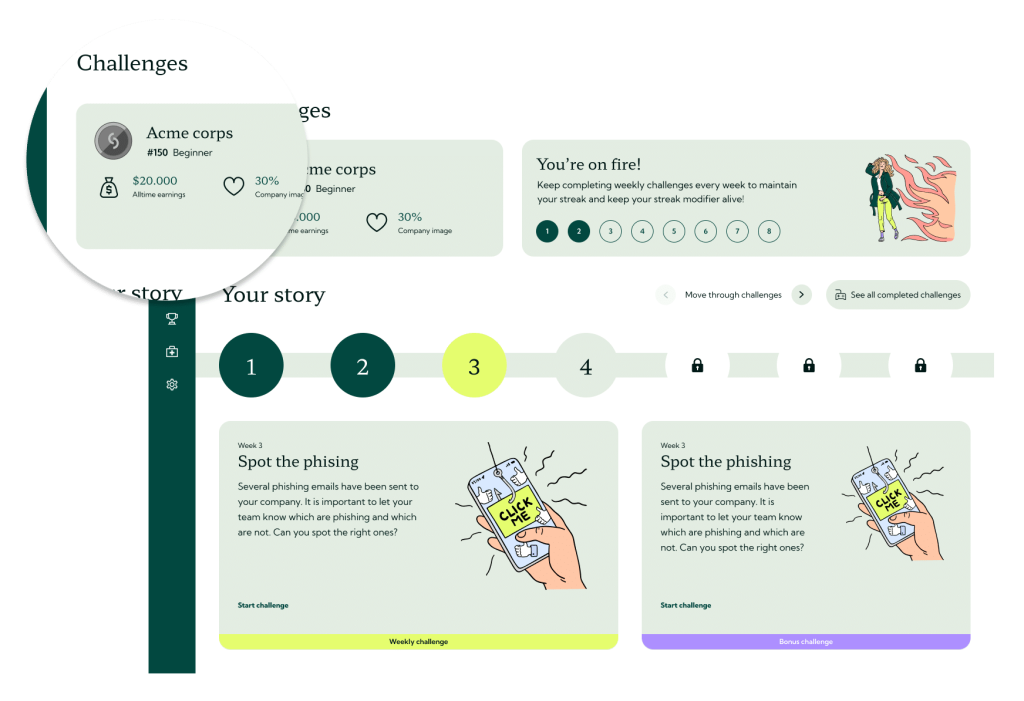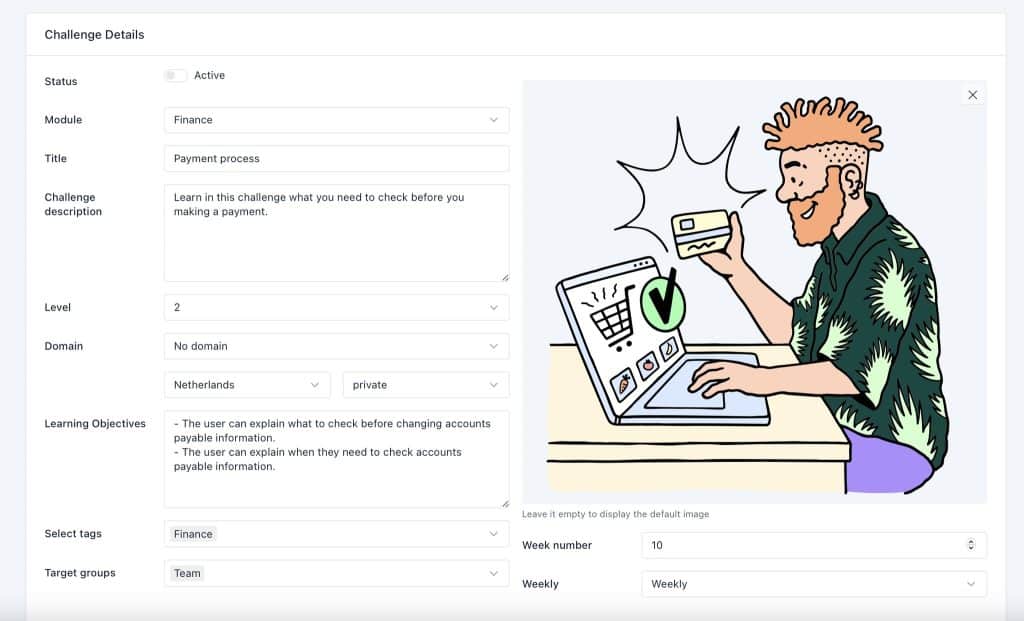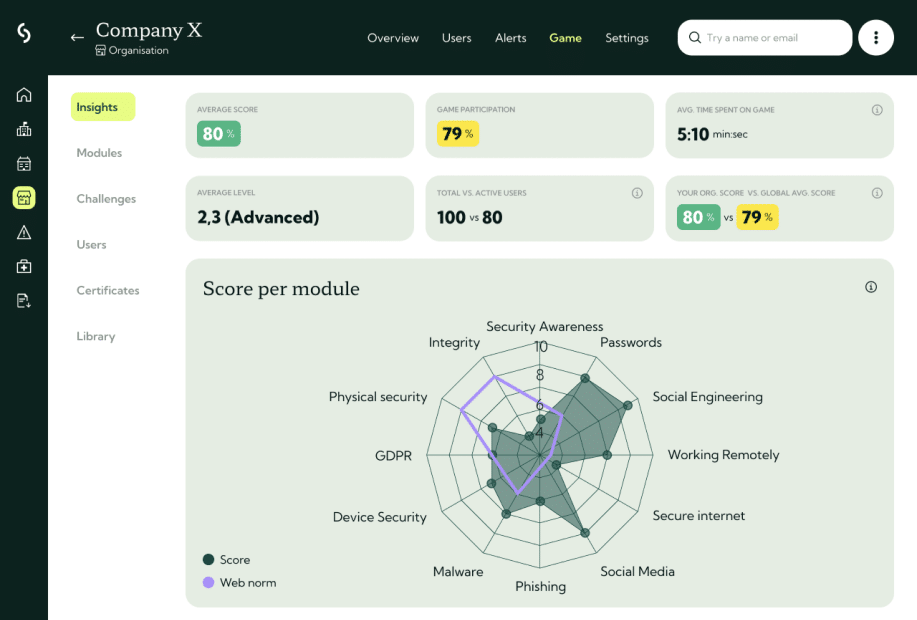Train your employees to recognize and report cyber threats with engaging, bite-sized challenges.
No credit card details required

Security awareness training doesn’t need to be boring. Guardey engages users with a compelling storyline, short challenges, and a leaderboard to encourage friendly competition.

Ensure all training matches your security policies by adding custom or user-generated content. Guardey is available in more than 10 languages.

Measuring your training program’s effectiveness is key to complying with most information security standards. Keep track of performance and find knowledge gaps with real-time analytics and weekly reports.
Get completely set up within minutes
Offer training in 10+ languages

Get helpful support via live chat or email (24/7)
